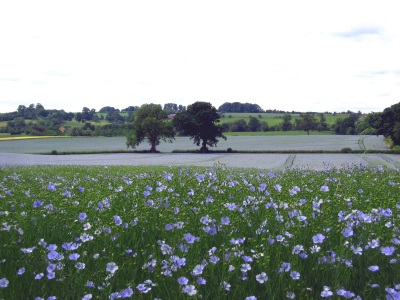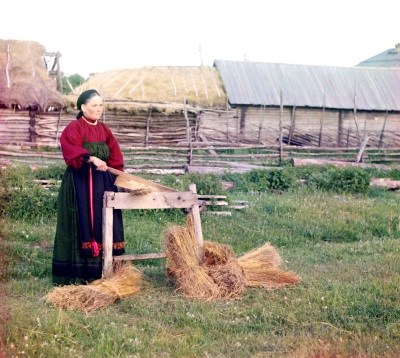Linseed and Flax Seed Confusion

A field of linseed in flower, Cotswolds. By Herry Lawford
[CC BY 2.0], via Wikimedia Commons
I've read so much recently about the benefits of consuming linseed oil and using flaxseeds for making beauty products such as flaxseed hair gel and assumed that flaxseed is the same as linseed. I'd assumed it was an American English v British English thing and that they were the same.
So I went on a mission today to clarify for myself and this is what I've concluded. I'd welcome any comments that concur or disagree but it seems that my GB v US usage of the names assumption was correct.
Linseed and flax belong to the same plant family Linaceae of the genus Linum species Linum usitatissimum. They are the same plant (Linum usitatissimum) and that the linseed and flax seed we see for human consumption are the same.
The confusion comes partly from a European v American use of the word flaxseed. Whereas most of Europe distinguish the different varieties of the same Linum usitatissimum with linseed plant varieties being grown for the seed and flax plant varieties being grown for the use of the plant fibres.

Breaking flax in Russia, 1910
In the UK and most of Europe:
The difference is in the naming of varieties grown depending on the intended use of the plant. The varieties grown for seed (and seed oil) are known as linseed plants and the varieties grown for linen fabric, rope etc. are known as flax plants. To add a little more confusion, in the UK we know the industrially produced linseed oil is used as a wood preserver (and other 'not for consumption' uses) and we buy it in the hardware or DIY store, whereas the linseed for consumption is bought in food or health shops.
In the US and most of America:
The naming of what we, in the UK, call linseed is named flaxseed or flax seed. For Americans this distinguishes it from the industrial use of linseed oil.
There you have it.
As added info; The plant varieties grown for their seed are shorter so that the plants energy is used for making seed whereas the plant varieties grown for the fibres are taller stemmed plants and although they too produce seed the seed yield is not so great although they are the same nutritionally.
Now on to the different varieties within the 'for seed' varieties.
There are two different basic varieties of linseed; brown (bonze) and yellow (golden). Both types have the same short-chain omega-3 fatty acids. Don't confuse the yellow/golden linseed with solin (Linola) which is very low in omega-3 fatty acids.
It seems they are the same nutritionally but as the shorter linseed plants yield a far greater amount of seed than the taller stemmed flax plant I now wonder if what we see on U.S. websites and YouTube videos are in fact just incorrectly naming the linseed as flaxseed.
To summarise for the UK:
Linseed: Short stemmed plant where the energy goes into making seed for the seed itself (whole or milled) and for the seed oil.
Flax: Long stemmed plant where the energy goes into the plant itself and primarily grown for the plant's long fibres which are spun and used for cloth (linen fabric) and twine making.
Buying and using of linseed / flax seed and their oils
Flax seeds are best bought whole and ground or milled as needed. There's evidence that whole seeds last longer than milled seeds.
Linseeds are difficult to digest whole and are best ground or milled either by hand in a mortar with pestle or in a coffee grinder. However you grind them ensure that you drink plenty of water when eating them.
Brown linseeds have a nuttier flavour and yellow linseed has a more delicate flavour.
Linseed oil is great but ground linseed (sometimes called linseed meal) also contains the lignans which is only present in the seed. (expand)
Buy good quality cold-pressed linseed oil (preferably organic). Linseed oil is stable at room temperature but the effectiveness of the omega-3 does deteriorate with age. It's therefore best to buy fresh cold pressed oil from a good supplier who will deliver soon after pressing. Buy smaller quantities more often. It is liable to turn rancid very quickly in strong sunlight and is best bought in dark, glass bottles and kept in a dark cupboard or fridge.